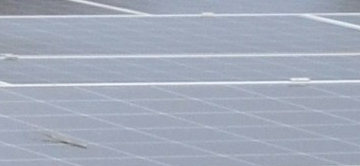Because it produces a non-storable commodity, the electric power industry has had to make enormous investments in reliable production and transport capacity in order to grow. Current environmental policies, which prioritise intermittent renewable resources, are inverting this logic: instead of the non-storable nature of the product determining the technologies used, the technologies are forcing producers to make it storable.
1. Time and space
Forget about car batteries, batteries which are only drained by use, and their modern equivalent, the accumulators in our mobile devices, and forget about pumping plants and compressed air. In the vast majority of cases, electricity cannot be stored, a fact which has two major effects on operators, one geographic and the other temporal.
With regard to geography, because the product does not allow for any breaks in transport, 20th century companies had to develop an energy transmission system which forms a continuous physical connection between production and consumption centres. The national and continental scale of the electric grid makes it the largest machine ever designed, with a spatial footprint that increasingly causes environmental issues. With the aid of utility poles, transformers, cables, and wires, engineers have overcome the geographic aspect of the problem of a non-storable commodity. [1]
What about time? The just-in-time method, [2] which was wildly popular in the auto industry in the 1980s, has been key in the electricity industry since its creation. Meeting the demand for electricity, which is not storable, means amassing production capacity and primary energy sources that can be mobilised within a given timeframe depending on the forecast models available, particularly weather forecasts.
For the most part then, the temporal problems caused by the non-storable nature of electricity have been resolved by storing the inputs necessary to produce it: dam + water, reactor + uranium, combustion turbine + natural gas, thermal plant + gas or coal or oil. Non-storable primary energies have at best been integrated into the energy mix because they are relatively regular (run-of-the-river plants), or at worst rejected as technical solutions because they are too expensive (wind and solar).
But the two great fears of our era, global warming and a nuclear disaster, have called this system into question. Governments, which seem to react to opinion polls rather than actually governing, have jumped on the renewable energy bandwagon, particularly wind and solar power. Since these energy sources rely on the cycles of day and night, the seasons, and wind conditions, ensuring that consumers have access to electricity regardless of the whims of nature implies being able to store the excess energy and distribute it when needed.[3]
2. Energy storage
There are four major types of large-scale energy storage technology: [4]
* mechanical energy (potential or kinetic): pumped-hydro storage (PHS), Compressed Air Energy Storage (CAES), flywheels;
* electrochemical and electrostatic energy: batteries, condensers, superconductors;
* thermal and thermo-chemical energy: sensible or latent heat, sorption heat storage;[5]
* chemical energy: hydrogen, methanation, etc.
These technologies vary widely in terms of capacity, speed, discharge and recharge times.[6] Only PHS systems are currently big enough to play a significant role in load balancing on grids by both removing and adding energy.
In the graph provided by eco2mix, the electricity used to draw the water up into the storage area is shown in dark blue under the horizontal line (because it is not being consumed here and now). Pumping is done at off-peak times, i.e. weekends and week nights. The water, which is stored at height, then flows through a turbine to supply the electricity grid at peak-demand times, like in other hydroelectric plants.

Under the current market system, which pays plants for the MWh injected into the grid, this technology's profitability is based solely on the difference between the purchase price of the electricity used to pump the water and the sale price of the electricity injected into the network, bearing in mind that the energy loss between the two operations is close to 25%. The drop in wholesale prices caused by wind and solar energy has significantly reduced this spread. Operators and investors alike have high expectations for the capacity compensation systems being implemented in several countries. They are also campaigning for special remuneration for PHS's flexibility in both absorbing excess production and compensating the insufficiencies of other technologies.[7]
3. More capacity, less primary energy
If the authorities achieve their ambitions for renewable energies, closing both thermal power plants which generate greenhouse gases and local pollution as well as nuclear power plants, which are hated by a part of the population, the need to develop technologies to store intermittent energy will become urgent. This will lead to an increase in costs, despite the fact that renewables have low production costs, since transforming them into reliable electricity requires very high capacity costs.
Let's take the example of a project which aims to supply 1 kW of power continuously, all day long, and two extreme solutions, one entirely based on gas turbines and the other using only solar panels. For thermal production, all you have to do is install 1 kW of capacity, and purchase fuel to burn and pay for the environmental damage it causes. Delivering the same amount of electricity using solar panels requires 8kW of production capacity and 21 kW of storage capacity. Why? At our latitude, solar panels produce at full capacity for roughly 1,000 hours per year, or roughly one eighth of the 8,760 hours in a year. This means that you have to be able to produce enough electricity for the whole day during the three daily hours of full-capacity sunshine. That requires storing enough power for 21 hours without sun. The decision thus comes down to the choice between installing huge capacities (8+21 kW for one solution vs. 1 kW for the other) and saving vast amounts of primary energy (solar panels have a life expectancy of 20 years, while a gas plant requires a constant supply of gas, 8,760 hours per year. Over 20 years, that comes to 175,200 hours vs. 0). [8]
The potential for huge savings on primary energy sources, which generate pollution, is very appealing. But these savings count for relatively little, since the discount rate, or to put it another way, the rate of preference for short-term gains, is high. For short-sighted decision-makers, capital expenditures in the present are more important than future energy savings. With a discount rate of roughly 10%, expenditures are virtually nil after the first decade. In order to switch over to renewable energy without hitting consumers' budgets too hard, we must either decrease the discount rate in order to increase the appeal of future primary energy savings, or drastically decrease the capital cost of intermittent energy. Let's call the glass half full. Like in all large-scale industries, which are driven by an increase in demand, the cost of storage technologies should drop thanks to the learning curve and economies of scale.
------------------------------------------------------
The improved performance of storage technologies should make it possible to better integrate intermittent energy sources into the energy mix. But which technologies? The sites available for pumping plants are limited, and the current market means that they are not necessarily profitable. Battery production, driven by the auto and home markets, requires expensive materials and production processes which generate pollution. That leaves "Power to Gas", which inspires high hopes. This technology consists of transforming excess electricity into hydrogen or synthetic methane, both of which can be stored and transported for industrial or domestic use.[9] Gas and electricity are often competitors. And pairing them usually means burning storable gas to produce non-storable electricity. Power to Gas reverses that process. Engineers will perhaps finally manage to overcome electricity's great weakness, the fact that it cannot be stored, so that technologies based on primary energies which are also non-storable can finally take their place in the energy mix, with no need for subsidies.
[1] In France, Réseau de Transport d’Electricité (RTE - Electricity Transport Network) is responsible for over 100,000 high and extra-high voltage overhead lines, while the main distributor, ERDF, manages 1.3 million km of high and low voltage lines (a quarter running underground). And then there are the millions of km of lines that extend beyond the meter to distribute electricity inside homes, offices, and workshops.
[2] The method, which was developed by Toyota, is also known as the five zeros: in addition to having zero inventory, the objective is to achieve zero delays (wait for orders before producing), zero paper, zero defects and zero breakdowns.
[3] We won't discuss the other solutions that can be combined with storage, which we covered in previous posts: spot prices depending on natural conditions, demand reduction, combined consumption technologies (e.g. gas+electricity) and production (e.g. negative correlation of wind power and hours of sunshine), and the increase in connections.
[4] We are using information drawn from IFP Energies nouvelles (2012) "Le stockage massif de l’énergie" (Massive Energy Storage) http://www.ifpenergiesnouvelles.fr/Espace-Decouverte/Les-cles-pour-comprendre/Le-stockage-massif-de-l-energie
[5] Sorption heat storage systems (SHSS) open new perspectives for solar heating of residential buildings. These systems allow long term heat storage (storage is done in the form of chemical potential) and offer high energy densities (up to 230 kWh/m3 of material on average) compared to conventional heat storage systems such as sensible heat storage (which, for the case of water, has an average energy density of approximately 81 kWh/m3 of material for a temperature change of 70 °C) and latent heat storage (nearly reaching energy densities of 90 kWh/m3 of material on average)." From P. Tatsidjodoung (2014) "Procédé de stockage d’énergie solaire thermique par adsorption pour le chauffage des bâtiments : Modélisation et simulation numérique", PhD Thesis, Grenoble, https://tel.archives-ouvertes.fr/tel-01087383/document.
[6] For technical and economic details, see https://ec.europa.eu/energy/sites/ener/files/energy_storage.pdf.
[7] Union Française de l’Electricité, http://ufe-electricite.fr/IMG/pdf/2013_01_21_step_methodologie_vf.pdf
[8] It would, of course, be more efficient to combine solar and wind power, which would require less storage capacity and more production capacity.
[9] For France, refer to Project Jupiter 1000, run by natural gas transporter GRTgaz: http://www.jupiter1000.com/





